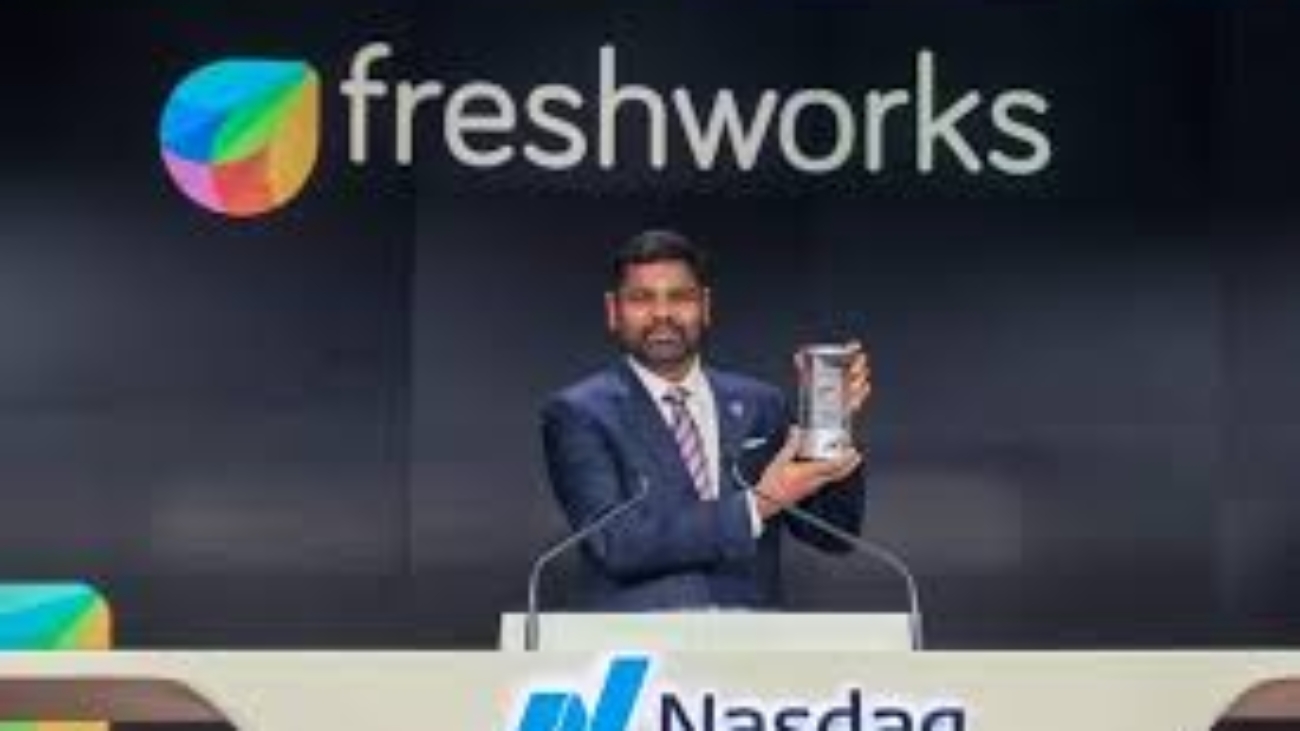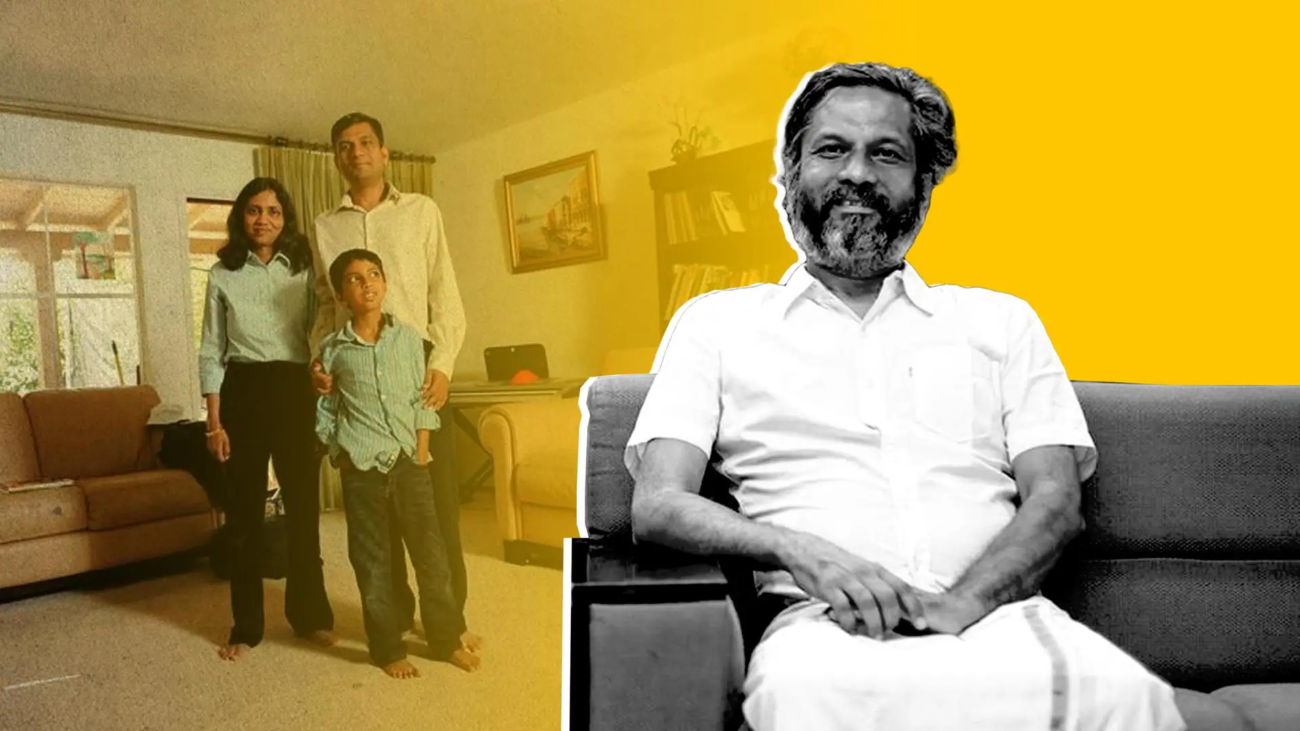Eoghan McCabe, the co-founder and former CEO of Intercom, is a leading figure in the tech industry, renowned for revolutionizing how businesses communicate with their customers. Under his leadership, Intercom emerged as one of the most innovative customer messaging platforms, transforming the landscape of customer service, sales, and marketing. This detailed article explores Eoghan McCabe’s journey from his early life to founding Intercom, the challenges he faced, and how he built a company that is now a cornerstone of modern customer engagement.
1. Early Life and Education
1.1 A Childhood in Ireland
Eoghan McCabe was born and raised in Dublin, Ireland. Growing up in a close-knit family, he developed a deep sense of curiosity and creativity from a young age. His parents, who were both educators, encouraged him to explore various interests, which fostered his love for technology and entrepreneurship. Eoghan was fascinated by computers and the internet, which were just beginning to become mainstream during his youth.
1.2 Academic Pursuits and Early Influences
Eoghan attended Trinity College Dublin, where he studied computer science. His time at Trinity was pivotal in shaping his career trajectory. He was particularly inspired by the rise of the internet and the potential it held for transforming industries. While at university, Eoghan began experimenting with building websites and simple applications, laying the groundwork for his future endeavors in tech.
During his college years, Eoghan was influenced by the burgeoning startup culture in Silicon Valley. He closely followed the stories of tech entrepreneurs like Steve Jobs, Bill Gates, and later, Mark Zuckerberg, who were creating world-changing companies from scratch. These stories fueled his ambition to one day build a company of his own.
2. Early Career and Entrepreneurial Ventures
2.1 First Steps into Entrepreneurship
After graduating from Trinity College, Eoghan McCabe was eager to dive into the world of entrepreneurship. He started his career by founding Contrast, a web design and development consultancy, along with his college friend Des Traynor. Contrast quickly gained a reputation for its high-quality work and innovative designs, attracting clients from various industries.
Contrast’s success gave Eoghan and his co-founders valuable experience in running a business and working with clients. However, it also exposed them to the limitations of existing tools for managing customer relationships and communication. They realized that many businesses were struggling to effectively engage with their customers, especially in the digital space. This insight planted the seed for what would later become Intercom.
2.2 Founding Exceptional and the Road to Intercom
In 2008, while still running Contrast, Eoghan and his team launched a side project called Exceptional, a bug-tracking tool for developers. Exceptional allowed developers to quickly identify and fix errors in their code, improving the quality and reliability of their software. The product gained traction in the developer community, and within a few years, it became a profitable business.
However, Eoghan’s true passion lay in solving the broader problem of customer communication. He saw an opportunity to create a platform that would enable businesses to engage with their customers in a more personal and meaningful way, using the internet as the primary medium. This vision led to the founding of Intercom in 2011.
2.3 The Birth of Intercom
In 2011, Eoghan McCabe, along with his co-founders Des Traynor, Ciaran Lee, and David Barrett, officially launched Intercom. The idea behind Intercom was simple yet revolutionary: to create a platform that would enable businesses to communicate with their customers in real-time, directly within their apps and websites.
The initial version of Intercom was a simple messaging tool that allowed businesses to chat with their customers in real-time. However, the team quickly realized that the potential for Intercom was much greater. They began to expand the platform’s capabilities, adding features for customer support, sales, and marketing. The goal was to create a unified platform that would allow businesses to manage all of their customer interactions in one place.
3. Building Intercom: From Startup to Unicorn
3.1 Identifying the Market Opportunity
When Intercom was founded, the market for customer communication tools was fragmented. Businesses were using a variety of different tools for email marketing, customer support, live chat, and sales, but there was no single platform that could do it all. Eoghan McCabe and his team saw an opportunity to create a unified platform that would streamline customer communication and make it more efficient.
The team at Intercom was also quick to recognize the shift towards more personalized and conversational customer interactions. They understood that customers were increasingly expecting real-time, personalized communication from the businesses they interacted with. Intercom was designed to meet this need, allowing businesses to engage with their customers in a more human and meaningful way.
3.2 Launching Intercom and Early Challenges
Intercom officially launched in 2012, and the initial response from customers was overwhelmingly positive. Businesses loved the simplicity and ease of use of the platform, as well as its ability to integrate seamlessly with their existing tools and workflows. However, like any startup, Intercom faced its share of challenges in the early days.
One of the biggest challenges was scaling the platform to meet the growing demand. As more and more businesses began using Intercom, the team had to work quickly to build out the infrastructure and features needed to support a larger user base. This required significant investment in engineering and product development, as well as a focus on hiring top talent.
Another challenge was competition. As the market for customer communication tools grew, so did the number of competitors. Eoghan and his team knew that in order to stay ahead, they would need to continue innovating and delivering value to their customers. This led to a relentless focus on product development and customer feedback, which became a core part of Intercom’s strategy.
3.3 Securing Funding and Building the Team
To support its growth, Intercom raised several rounds of funding from prominent venture capital firms. In 2013, the company raised $6 million in a Series A round led by Social Capital, with participation from Bessemer Venture Partners. This was followed by a $23 million Series B round in 2014 and a $50 million Series C round in 2015.
With the influx of capital, Intercom was able to significantly expand its team and invest in product development. Eoghan McCabe focused on building a team that shared his vision for the company and was passionate about creating products that delighted customers. He placed a strong emphasis on hiring individuals who were not only talented but also aligned with Intercom’s values and culture.
As the team grew, Intercom also expanded its presence globally, opening offices in San Francisco, Dublin, London, and Chicago. This global expansion allowed the company to better serve its growing customer base and tap into new markets.
3.4 Building a Product-Market Fit
One of the keys to Intercom’s success was its ability to build a strong product-market fit. From the beginning, Eoghan McCabe and his team were laser-focused on understanding their customers’ needs and building a product that solved real problems. They spent countless hours talking to customers, gathering feedback, and iterating on the product.
This customer-centric approach allowed Intercom to quickly identify what was working and what wasn’t. The team was able to make rapid improvements to the platform, adding new features and capabilities that addressed the pain points of their customers. This iterative approach helped Intercom build a product that resonated with its target audience and met their evolving needs.
Intercom also made a strategic decision to focus on small and medium-sized businesses (SMBs) in the early days. These businesses were often underserved by existing customer communication tools, and Intercom’s platform was a perfect fit for their needs. By focusing on this market segment, Intercom was able to build a strong customer base and generate significant revenue.
4. Scaling Intercom
4.1 Expanding the Product Offering
As Intercom grew, the company began to expand its product offering to meet the needs of a broader range of customers. While the platform initially focused on customer support and live chat, it quickly evolved to include features for sales, marketing, and product management. This expansion allowed Intercom to become a more comprehensive solution for customer communication and engagement.
One of the key innovations introduced by Intercom was the concept of “messenger-first” communication. This approach put real-time messaging at the center of customer interactions, making it easier for businesses to engage with their customers in a more personal and conversational way. Intercom’s messenger-first approach was a major differentiator in the market and helped the company stand out from competitors.
Intercom also introduced a range of new products and features, including bots, automated messaging, and advanced analytics. These innovations allowed businesses to automate routine tasks, personalize their communication at scale, and gain deeper insights into their customer interactions. By continuously expanding and improving its product offering, Intercom was able to stay ahead of the competition and maintain its position as a leader in the market.
4.2 Building a Strong Brand
Eoghan McCabe understood the importance of building a strong brand and a loyal customer base. From the beginning, he and his team were committed to creating a brand that was not only innovative but also customer-centric and trustworthy. This commitment to brand building was reflected in everything from Intercom’s product design to its marketing and customer support.
Intercom’s brand was built around the idea of “making internet business personal.” This message resonated with customers who were looking for a more human and personalized way to engage with their customers. Intercom’s focus on personalization and customer experience became a key part of its brand identity and helped the company build a strong reputation in the market.
The company also invested in content marketing, using blogs, webinars, and educational resources to engage with its audience and build thought leadership in the industry. Intercom’s content was known for being high-quality, informative, and actionable, which helped the company attract a loyal following of customers and industry professionals.
4.3 Cultivating a Company Culture
As Intercom grew, Eoghan McCabe placed a strong emphasis on cultivating a positive and inclusive company culture. He believed that a strong culture was essential for attracting and retaining top talent, as well as for driving innovation and growth. Intercom’s culture was built around the values of transparency, collaboration, and customer focus.
Eoghan was known for being an approachable and hands-on leader, who was deeply involved in the day-to-day operations of the company. He encouraged open communication and feedback, and he was committed to creating an environment where employees felt empowered to take risks and contribute their ideas.
Intercom also made a point of celebrating diversity and inclusion, both within the company and in its customer base. The company’s leadership team was diverse, and Intercom actively worked to create an inclusive workplace where people from all backgrounds could thrive.
5. Intercom’s Impact and Legacy
5.1 Transforming Customer Communication
Under Eoghan McCabe’s leadership, Intercom transformed the way businesses communicate with their customers. The platform’s innovative approach to customer communication helped businesses of all sizes deliver more personalized, real-time, and conversational experiences. Intercom’s impact was felt across a wide range of industries, from e-commerce and SaaS to healthcare and education.
Intercom’s success also inspired a new generation of customer communication tools and platforms. Many companies in the space began adopting Intercom’s messenger-first approach, and the platform became a model for how to build and scale a successful SaaS business.
5.2 The Global Reach of Intercom
Intercom’s global reach is a testament to the platform’s widespread adoption and impact. With offices in major tech hubs around the world, Intercom was able to serve a diverse and growing customer base. The platform was used by thousands of businesses in over 100 countries, making it a truly global success story.
Eoghan McCabe’s vision for Intercom was always to create a platform that could be used by businesses of all sizes, from small startups to large enterprises. This vision was realized as Intercom scaled to serve a wide range of customers, from small businesses to some of the world’s largest companies.
5.3 Intercom’s Place in the SaaS Ecosystem
Intercom’s success has cemented its place as a key player in the SaaS ecosystem. The platform’s innovative approach to customer communication has been widely recognized, and it has received numerous awards and accolades over the years. Intercom has also been featured in major publications, including Forbes, TechCrunch, and The New York Times, as a leading example of a successful SaaS company.
Eoghan McCabe’s leadership and vision have been instrumental in Intercom’s success. He has been recognized as one of the most influential figures in the tech industry, and his work with Intercom has left a lasting impact on the world of customer communication.
6. Overcoming Challenges
6.1 Navigating Competition
As Intercom grew, it faced increasing competition from other customer communication platforms and tools. Eoghan McCabe understood that staying ahead of the competition would require continuous innovation and a deep understanding of customer needs.
To differentiate Intercom from its competitors, Eoghan focused on building a product that was not only powerful but also incredibly user-friendly. He believed that the key to Intercom’s success was making the platform accessible to everyone, regardless of their technical expertise. This emphasis on usability and flexibility helped Intercom maintain its competitive edge in a rapidly evolving market.
6.2 Managing Growth
As Intercom scaled, Eoghan McCabe faced the challenge of managing rapid growth while maintaining the company’s culture and values. He recognized that scaling a company required a delicate balance between expanding the team and preserving the qualities that made Intercom successful in the first place.
To address this challenge, Eoghan implemented processes and structures that supported growth while fostering innovation and collaboration. He also prioritized transparency and communication, ensuring that everyone in the company was aligned with Intercom’s mission and goals. By carefully managing growth, Eoghan was able to scale Intercom without losing sight of the company’s core values.
7. Intercom’s Vision for the Future
7.1 Expanding Capabilities
Looking to the future, Eoghan McCabe envisioned Intercom continuing to push the boundaries of customer communication. He saw significant opportunities for the platform to expand its capabilities, particularly in areas like automation, AI, and data analytics. By leveraging these technologies, Eoghan believed that Intercom could help businesses deliver even more personalized and efficient customer experiences.
Eoghan was also focused on expanding Intercom’s integrations with other tools and platforms. He recognized that businesses were increasingly using a variety of software tools to manage their operations, and he wanted Intercom to be at the center of their tech stack. By building integrations with popular tools like CRM systems, marketing automation platforms, and e-commerce solutions, Intercom could provide even more value to its customers.
7.2 Expanding Globally
As digital transformation continued to accelerate around the world, Eoghan McCabe saw significant opportunities for Intercom to expand its reach globally. He was committed to ensuring that Intercom remained at the forefront of the customer communication space, providing businesses with the tools they needed to succeed in an increasingly digital and connected world.
Eoghan also recognized the importance of serving a diverse and global customer base. He was focused on building products that could be used by businesses in different industries and regions, and he was committed to making Intercom accessible to users around the world.
7.3 Beyond Intercom: Eoghan McCabe’s Broader Impact
Beyond his work with Intercom, Eoghan McCabe has also made a broader impact on the tech industry and entrepreneurship. He is a vocal advocate for the importance of customer experience and has shared his insights and vision at conferences and events around the world. Eoghan’s thought leadership has inspired countless entrepreneurs and business leaders to rethink how they approach customer communication and engagement.
Eoghan is also committed to giving back to the community. He supports various initiatives aimed at promoting diversity and inclusion in the tech industry, as well as programs that encourage young people to pursue careers in STEM fields. Through his work with Intercom and beyond, Eoghan McCabe is making a lasting impact on the tech industry and society as a whole.
Conclusion
The success story of Eoghan McCabe, the visionary CEO behind Intercom, is a testament to the power of innovation, perseverance, and a deep commitment to customer-centricity. From his early days as a curious young engineer to his role as the leader of one of the most influential customer communication platforms in the world, Eoghan has consistently demonstrated a passion for creating products that make a difference in people’s lives.
Through Intercom, Eoghan has not only transformed the way businesses communicate with their customers but has also opened up new possibilities for what software can achieve. His journey is an inspiration to aspiring entrepreneurs, developers, and anyone who believes in the potential of technology to drive positive change. As Intercom continues to grow and evolve under Eoghan’s leadership, there is no doubt that his impact on the tech industry will be felt for years to come.





